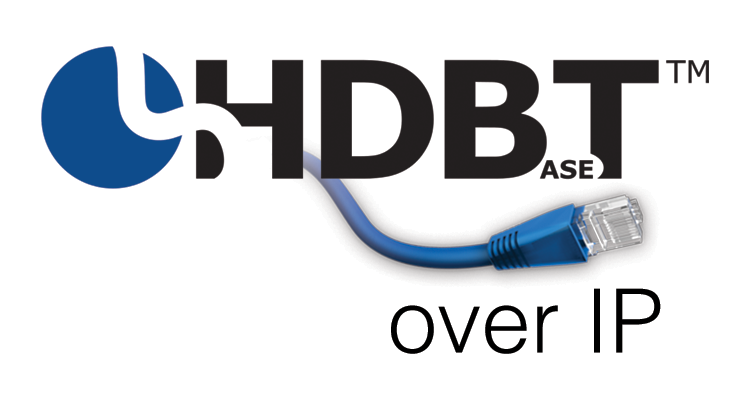HDBaseT Over IP: Courting Disaster

The HDBaseT Alliance used InfoComm to officially debut the first set of products using their new HDBaseT over IP infrastructure — designed to compete against the SDVoE Alliance standard, more commonly known as the AptoVision BlueRiver NT+ AV-over-IP system.
This is a disaster waiting to happen. Why?
Well, I love HDBaseT. The transport platform that was originally launched by — and is still controlled by — Valens debuted in 2008 and, simply put, designed the content of 5Play. 5Play refers to the five types of signals that are sent via the HDBaseT chipset (also made and controlled by one company: Valens) down CATx cable: video, audio, Ethernet, USB and power. So the idea was to have a standard way that everyone would use (and nearly every signal distribution company in the world has an HDBaseT product line) to send those five signals via CATx wire.
Genius, right? Well, could have been.
The real-world problem that Valens, the since founded so-called HDBaseT Alliance and the manufacturers themselves have caused is that there’s nearly no interoperability. In most cases, you can’t connect Brand A’s HDBaseT product to Brand B’s. And, in some cases, connecting Brand A’s to Brand B’s will cause harm to one or the other. In a few cases, projectors have even been destroyed.
Why? Well, HDBaseT, probably one of the best ideas ever in the ProAV market, has been undermined by the company that started it in the first place, Valens. Valens has taken a hands-off approach to compatibility and interoperability. In essence, the HDBaseT product community has become the wild west of technology. No one known whose HDBaseT stuff works with whose until you connect it up. By then, it’s too late — the damage (to the product, to the dealer’s reputation or to the systems designer) has already been done.
Valens, and the so-called HDBaseT Alliance, are totally and completely to blame. They can solve this with one simple thing — branding and labeling standards.
Here’s a typical scenario. You specify and buy Brand A’s HDBaseT transmitters and Brand B’s matrix. Both are labeled as HDBaseT products. But, alas, Brand B decided NOT to use 5Play HDBaseT. They’ve decided to only switch, via their metric, video and audio — leaving off Ethernet, USB and power. No biggie as most ProAV systems only use mostly video and audio anyway. But, Customer X wants USB routed too. Systems Designer Sally specified HDBaseT for the entire system — well done. And, Brand A does in fact pass 5Play. But, nowhere in the specs does Brand B say it only routes 2Play — in fact, 2Play doesn’t exist anywhere in the HDBaseT “standard” or on the Valens or HDBaseT Alliance websites. It’s non-existent. So, products specificied, purchased and now installed don’t work together. And, you find it out on install day — 64 days after the system was designed.
One might argue that systems designer Sally should have known this. But, alas, the HDBaseT Alliance doesn’t say that, “Oh, by the way, there’s 2Play, 3Play, 4Play and 5Play.” Nope. They only talk 5Play. The Alliance’s response is predictable: “Hey, Gary, we have a comprehensive list of products and what they do on our website — if the manufacturer tells us.”
Can you imagine, every time you buy a router, having to see if it’s downward-compatible with every device in your home? Of course not. There’s an assumption that since they are all 802.11x standard, they are interoperable. And, IEEE was smart enough to stipulate that the aforementioned 802.11x changes or adoption of the different 802.11x standards required a new letter. For example, the first was 802.11a. Then there was 802.11b. Then 802.11c and so forth. The fact that 802.11a and 802.11c have different labels (and protocols) means they are, well, different.
So, why isn’t the HDBaseT Alliance enforcing that? Why not just require manufacturers to label their products 2Play, 3Play, 4Play, 5Play, etc.? It’s a SIMPLE solution.
So now can you imagine the disaster-waiting-to-happen that is HDBaseT-over-IP?
Go SDVoE Alliance. Kick their ass.




